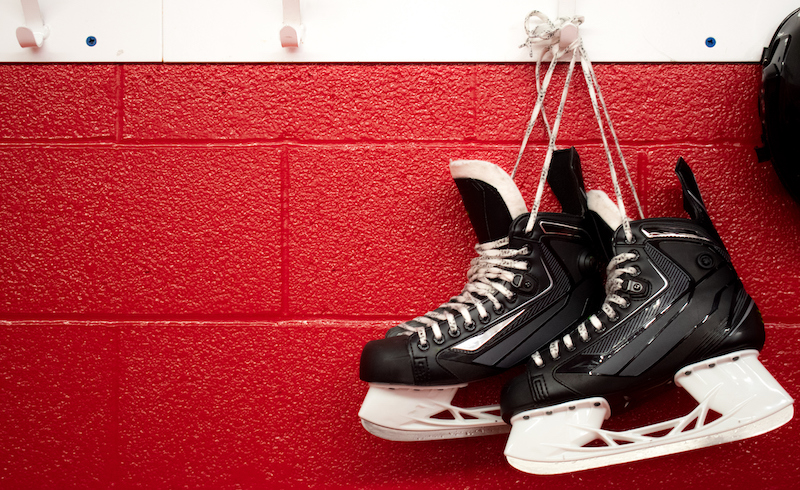

Columns/Blogs
Bullying
Sexual Harassment
Addressing athlete abuse in Canadian sport requires internal change and external investigators
September 6, 2022
By
The Conversation
 Photo: Getty Images
Photo: Getty Images By MacIntosh Ross, Assistant Professor, Kinesiology, Western University
Canadian sport is in crisis. Reports of misconduct are making headlines with troubling regularity. Many sports federations under the purview of Sport Canada appear saturated with harassment, bullying and abuse.
In response the Government of Canada has created a new Office of the Sport Integrity Commissioner (OSIC). Minister of Sport Pascale St-Onge believes OSIC, which began work earlier this year, provides athletes with a reporting structure capable of addressing the mounting allegations.
OSIC is mandated with upholding and administering the Universal Code of Conduct to Prevent and Address Maltreatment in Sport (UCCMS) and “using trauma-informed processes that are compassionate, efficient and provide fairness, respect and equity to all parties involved.” The code of conduct is meant to establish common principles, foster a respectful culture in sport and provide a framework for sanctions against prohibited behaviour.
“I’m happy that we’re going to have an independent mechanism,” St-Onge said in June. “I know that the first years are going to be hard, but what I hope is that we can have a future where athletes, as soon as situations happen, they know (where) they can turn to, so that we can intervene as fast as possible.”
By pressuring the powers that be, athletes’ voices have prompted change. But is OSIC enough? And is it independent?
The road to OSIC
In 2019, researchers from the University of Toronto partnered with AthletesCAN to publish a report on the maltreatment of current and former national team athletes. AthletesCAN is an association that represents national team athletes in Canada.
The report illustrated the prevalence of mistreatment and abuse endured by national athletes. It led to further discussions, including AthletesCAN’s Safe Sport Summit, on protecting the nation’s athletes.
AthletesCAN is at the forefront when it comes to protecting athletes. The group believes that while OSIC is an encouraging start, additional measures will also be needed.
“The Office of the Sport Integrity Commissioner is a piece of the puzzle,” AthletesCAN said when I spoke with them. “But to truly solve the crisis of safety in sport, the effort has to come from all sport stakeholders — the Canadian sport community cannot only rely on OSIC alone to make sport safer. With that said, the new mechanism developed by the SDRCC was significantly needed as a foundation and funding was provided to them.”
OSIC: Good, but not enough
OSIC is meant to be an “independent safe sport mechanism,” under the umbrella of the Sport Dispute Resolution Centre of Canada (SDRCC). But it’s fair to question just how independent it can be. After all, the SDRCC is funded by Sport Canada. Can the organization that permitted the abuse crisis to reach its current heights be trusted to police itself going forward?
Rob Koehler, director general of Global Athlete, a worldwide athlete advocacy initiative, doesn’t think so. He’s concerned that OSIC is a band-aid solution, rather than a concerted government effort to address the widespread abuse in Canada’s sports system.
“Canadian sport and the government of Canada need to change their focus and commit to taking the issue of abuse outside their scope,” Koehler explained when I spoke to him about this issue. “As we have seen over the past year, sport and sporting administrators are conflicted and most want to avoid scandals in fear of hurting their brands.”
By handling claims of abuse with an internal mechanism, the Government of Canada is overlooking experts more capable of assisting survivors and ignoring the potential conflicts of interest of its own sporting administrators.
The government has long treated sport as a sort of socio-cultural island, somehow necessitating its own regulations beyond the laws and processes of the nation more broadly. As Koehler told me:
“To be clear, abuse in sport is not a sport issue; it is a human rights issue.”
“As a result, human rights experts outside of sport, and trauma informed investigators, need to manage any abuse complaints. Sport, like every industry, needs oversight, accountability, and transparency. Sport has none of these. That is why any investigation must be carried out by a third-party judicial authority. Until government demands these principles, sport will continue to a breeding ground for abuse.”
Third party oversight
“I applaud this government for creating OSIC?It’s necessary, but I don’t think it’s sufficient,” explained Ann Peel, who helped establish AthletesCAN in 1992 and served as the organization’s founding chair.
In the 1980s, Peel travelled the world representing Canada during her decorated career as a race walker. But it was in the realm of athlete advocacy that she claimed her greatest victories. With the benefit of 30 years of experience in athlete advocacy, Peel sees value in both OSIC and independent investigations.
“A wide-ranging independent investigation needs to happen to manage those historic complaints parallel to the OSIC,” Peel told me. “I’m concerned that OSIC’s reliance on a complaint mechanism will not address the systemic issues that we know exist in sport. Only an independent investigation can do that.”
Minister St-Onge’s work to grow safe sport mechanisms in Canada has made meaningful progress, but OSIC may prove insufficient for addressing the nation’s backlog of historical cases. It’s hard to imagine OSIC making much headway on its own. Although a useful and long-overdue tool, OSIC is undeniably part of the system that spawned such abuse.
OSIC is an important first step, but I can’t fathom a solution that does not embrace an independent, third-party judicial inquiry as well.
MacIntosh Ross does not work for, consult, own shares in or receive funding from any company or organization that would benefit from this article, and has disclosed no relevant affiliations beyond their academic appointment. This article is republished from The Conversation under a Creative Commons license. Disclosure information is available on the original site.
Print this page